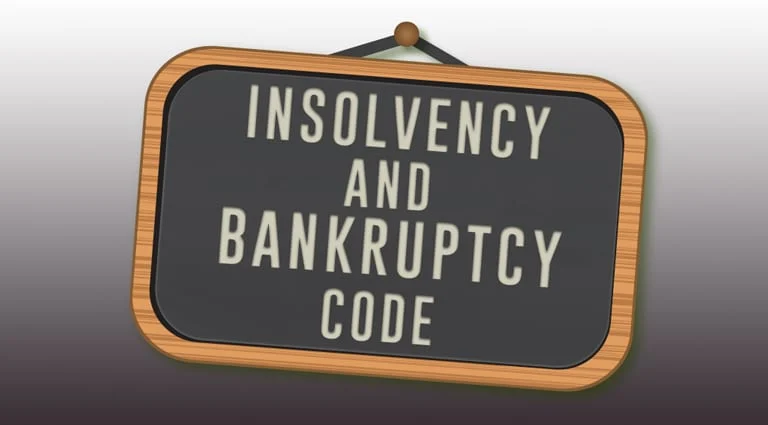Description

Copyright infringement not intended
Picture Courtesy: www.barandbench.com
Context: The Supreme Court upheld the constitutionality of provisions of the Insolvency and Bankruptcy Code (IBC), 2016, allowing lenders to initiate insolvency proceedings against personal guarantors without providing them an opportunity to present their case.
Key Highlights
- The Supreme Court has upheld the constitutional validity of key provisions of the IBC, 2016. These provisions allow lenders to initiate insolvency proceedings against personal guarantors without allowing them to present their stand.
- The court clarified that the IBC is not operating retroactively, and it does not violate the constitution by manifest arbitrariness.
- The court emphasized that resolution professionals' suggestions are recommendatory to the NCLT and not final.
- The decision is seen as a welcome move that strengthens the enforcement of personal guarantees. Promoters are now compelled to exercise diligence when issuing guarantees, serving as an added deterrent for defaults.
- The court's decision provides a clear path for creditors to pursue the insolvency process against personal guarantors.

Insolvency and Bankruptcy Code
- The Insolvency and Bankruptcy Code, 2016 (IBC) is an Indian law that aims to provide a fast and efficient mechanism for resolving insolvency and bankruptcy cases of companies, partnership firms, and individuals.
- The IBC was enacted to replace the existing laws that were fragmented, outdated, and ineffective in dealing with the rising problem of non-performing assets (NPAs) and debt defaults in India.
Main features of the IBC
- It creates a unified framework that applies to both corporate and individual insolvency and bankruptcy proceedings.
- It establishes two key institutions:
- The Insolvency and Bankruptcy Board of India (IBBI) as the regulator and the National Company Law Tribunal (NCLT) as the adjudicating authority for corporate insolvency cases.
- The Debt Recovery Tribunal (DRT) as the adjudicating authority for individual insolvency cases.
- It introduces a creditor-in-control model, where the creditors have the power to initiate and drive the insolvency resolution process, as opposed to the debtor-in-possession model, where the debtor remains in control of the assets and operations during the process.
- It provides a time-bound process for resolving insolvency cases, with a maximum period of 180 days (extendable by another 90 days in exceptional cases) for corporate insolvency resolution process (CIRP) and a maximum period of 90 days (extendable by another 45 days in exceptional cases) for pre-packaged insolvency resolution process (PIRP), which is a new option introduced in 2021 for faster and cheaper resolution of stressed assets.
- It lays down a clear hierarchy of claims for the distribution of proceeds from liquidation or resolution, with priority given to secured creditors over unsecured creditors and operational creditors over financial creditors.
- It promotes a market-based approach for the resolution of stressed assets, by allowing various resolution options such as merger, acquisition, restructuring, sale of assets, etc., and by facilitating the participation of various stakeholders such as resolution professionals, insolvency professional agencies, information utilities, etc.
Challenges and limitation
- The lack of adequate infrastructure and manpower at the NCLT and DRT leads to delays and pendency of cases.
- The frequent amendments and judicial interventions create uncertainty and inconsistency in the interpretation and implementation of the law.
- The impact of the COVID-19 pandemic has disrupted the functioning of the insolvency ecosystem and necessitated the temporary suspension of fresh insolvency proceedings for six months from March 2020 to September 2020.
- The low recovery rate and high haircuts for creditors in some cases, especially for operational creditors who often receive negligible or no amount from resolution or liquidation.
- The lack of awareness and accessibility of the IBC among small businesses and individuals who may benefit from its provisions but are reluctant or unable to use them due to various reasons such as stigma, cost, complexity, etc.
Way forward for the IBC
- Strengthening the capacity and efficiency of the NCLT and DRT by increasing their benches, staff, resources, and digitization.
- Streamlining and stabilizing the legal framework by minimizing amendments and ensuring clarity and consistency in judicial pronouncements.
- Adapting to the changing economic scenario by introducing suitable measures to deal with the impact of COVID-19 on insolvency cases such as extending moratoriums, providing relief packages, facilitating restructuring schemes, etc.
- Enhancing the recovery rate and reducing haircuts for creditors by encouraging competitive bidding, ensuring transparency and accountability in valuation processes, promoting operational creditor participation, etc.
- Increasing awareness and accessibility of the IBC among small businesses and individuals by simplifying the procedures, reducing the costs, removing the stigma, creating awareness campaigns, etc.
.jpg)
Conclusion
- The Supreme Court's decision is a significant development in the realm of insolvency law, addressing constitutional validity and providing guidance on the resolution process for personal guarantors.
Must Read Articles:
Insolvency And Bankruptcy Code: https://www.iasgyan.in/daily-current-affairs/insolvency-and-bankruptcy-code-39#:~:text=The%20Insolvency%20and%20Bankruptcy%20Code%20(Amendment)%20Bill%2C%202021%2C,(Amendment)%20Ordinance%2C%202021.
|
PRACTICE QUESTION
Q. How has the Insolvency and Bankruptcy Code (IBC) in India contributed to the resolution of distressed assets and the revitalization of businesses? What key amendments or developments have been introduced to enhance the effectiveness of the IBC in addressing insolvency challenges in the country?
|













